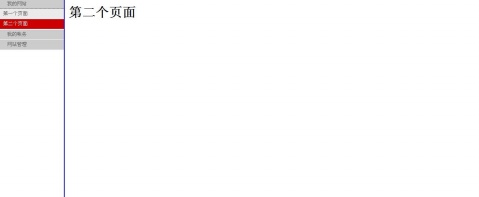
This article introduces a framework that Frameset can’t be simpler to make.
Let’s first take a look at the page structure of this framework. Since it is a purely hand-made test program, I just made some code in Notepa, which is very rough. But it still contains the general content of Frameset. Okay, let’s get back to business, let’s first take a look at the file structure.
1.Frame.html contains the structure of the frame
2.link.html contains the left menu bar of the frame
3.firstPage.html contains a line of text on the main page of the frame (I am too lazy to do it well)
4.secondPage.html is similar to 3 above and is used for testing.
The following is a screenshot (not clear, this is my first time doing this) 
First look at the code in Frame.htm:
Doesn’t it feel very simple? It is mainly a Frameset element, and then the attribute cols="159px,*" is set. The function of this attribute is to divide the page into 159px and other two areas. As shown in the picture above.
Then there is the frame tag. The cols attribute above has several values, and the sub-element below should also have several values. Then there are some common properties of . Including the width of the border, whether scroll bars appear, border color, and whether users are allowed to change the size. Which source file is it and some other attributes.
Then the second source file points to firstPage for testing.
Next is link.html:
这个其实就偷懒了,是从网上找的一个DIV CSS JS做的一个下拉菜单,有兴趣的可以自己看一下,我感觉自己能用起来,知道怎么改就OK了。
下面是两个测试页面,由于这连个测试页面稍微懂点HTML的都能写出来,这里就只贴出页面1的代码:
估计高手看到这都要吐了,一定说很垃圾,不过只是记录下自己做的小东西。呵呵,见谅了啊。




